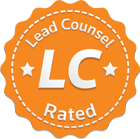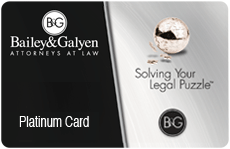The Different Types of Product Liability Claims | The Potentially Liable Parties
 When you purchase a consumer product, you expect that it will be safe when you use it for its intended purpose. You assume that the company that designed, manufactured and put the item on the market took reasonable steps to consider the potential risks of injury associated with the goods, and that they conducted appropriate tests to ensure that it’s safe. If there are known risks, you assume that the company would put you on notice.
When you purchase a consumer product, you expect that it will be safe when you use it for its intended purpose. You assume that the company that designed, manufactured and put the item on the market took reasonable steps to consider the potential risks of injury associated with the goods, and that they conducted appropriate tests to ensure that it’s safe. If there are known risks, you assume that the company would put you on notice.
Unfortunately, in the rush to be the first to market with a new product, too many companies cut corners, looking at your potential injuries as nothing more than the cost of doing business. You do, however, have a right to bring a personal injury lawsuit when you’ve been injured because of exposure to, use of or the malfunction of a product.
The Legal Basis for a Product Liability Claim
Because there are no federal product liability laws, product liability claims may be based on allegations of negligence, on a legal theory of strict liability, or on a breach of warranty of fitness, as set forth in state law.
To succeed with a claim based on negligence, an injured person must show that the defendant (person from whom compensation is sought), failed to act as a reasonable person would. In addition, it must be proven that the failure to act reasonably caused the product-related accident and that the person seeking compensation had actual losses.
In a strict liability claim, there’s no need to prove negligence. Strict liability claims are typically based on statutes and impose liability regardless of the defendant’s intent. With a strict liability claim, if a defect causes harm, there’s generally liability.
Some states have laws which imply a breach of warranty of fitness on consumer products. In those states, the injured person must prove that the product did not meet that warranty. A breach of warranty is essentially a breach of contract claim.
The Different Types of Product Liability Claims
There are three types of product liability claims:
- Defective design of a product—A design defect exists before a product is manufactured. It’s a defect in the configuration of the product that inherently poses a risk of danger. An example of a design defect would be a motor vehicle with a center of gravity that makes it unreasonably susceptible to rollovers. Most states require that the injured party prove the existence of a design defect.
- Defective manufacture of a product—Manufacturing defects can include the use of substandard materials, the failure to ensure proper quality control to ensure correct assembly, missing parts or components, or negligence anywhere in the construction or production of a consumer good.
- Defective marketing of a product—This involves the failure to provide adequate warnings of known dangers or the failure to provide the consumer with appropriate instructions for the use of the product
Who Can Be Sued in a Product Liability Claim?
Any individual or entity within the chain of distribution may be liable for injuries suffered because of a dangerous or defective product. That includes the designer (if there are allegations of a design defect), the manufacturer, distributors, wholesalers and retailers.
Contact the Experienced Personal Injury Attorneys at Bailey & Galyen
At the law offices of Bailey & Galyen, we aggressively protect the rights of people who have suffered any type of injury because of the wrongful acts of another person or entity, including individuals who have been hurt by dangerous or defective products. We’ll fight for you throughout the legal process, working hard to help you get full and fair compensation for all your losses. Contact us by e-mail or 844-402-2992 call our offices at one of the convenient locations listed below. Our phones are answered 24 hours a day, seven days a week.








